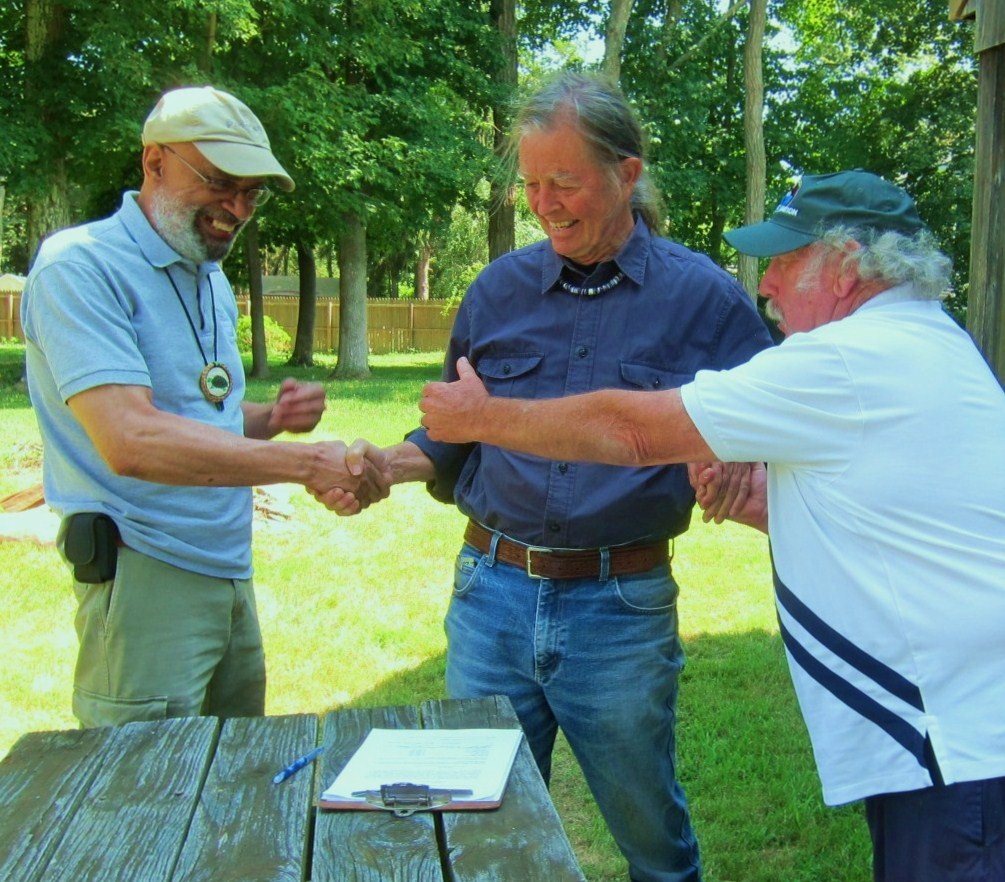 We, the Nehantic Nation, as descendants of a Tribe that has existed in this place from prehistoric times
We, the Nehantic Nation, as descendants of a Tribe that has existed in this place from prehistoric times
to the present, recognize our ancestral connection to the lands of our people.
Our populations numbered in the thousands over the millennia. However, contact with European
colonization during the 16th , 17th, 18th centuries led to devastating depopulation due to deadly epidemics.
Reservation lands were set aside for the Nehantics in 1671 at Black Point, CT, but over time, our people were not able to survive on the reserved lands or on our winter quarters land known as the Gungy Tract.
From the beginning of Colonial Connecticut until the present, Nehantic men left the reservation to serve in the military. In addition, living in various urban centers, our Nehantic ancestors played a major role in the fight for social justice, equality, and civil rights. They were a part of the Underground Railroad, the Abolitionist movement, and the growing organization that endured to become the NAACP. During the frequent wars in which Nehantic men served, and due to the outward migration to find employment, the population living on the reservation dwindled to under a hundred individuals. They settled in urban centers throughout the northeast in places like Middletown, Windsor, Hartford, Springfield. Many families left Black Point to help establish the Brothertown communities, first in upstate New York, then in Wisconsin. Nehantic families spread to Arizona, Iowa, Illinois, the Upper Peninsula in Michigan.
By the 1870s, the Connecticut legislature felt justified in declaring the Nehantic extinct, to erase from existence the Nehantics living off the reservation, thereby illegally clearing the way to seize tribal lands for development.
By the beginning of the 21st century, those Nehantics living here and preserving the
Nehantic culture, sent out a call to these widespread families to come back to our
homelands during our annual family gatherings under the Sturgeon Moon in August.
We, the descendants of the first Nehantic people reaffirm our dedication to promote our tribe’s social, cultural, educational, economic and political progress. We have become more diverse as new blended families blossom from historic ones. With this diversitycome challenges of identity and vision for the future.
We are dedicated to the conservation and continuation of our tribal culture and history. We continue to care for the land upon which we have lived, to welcome Nehantics back to our homelands, and to promote the social and cultural well-being of Nehantic descendants.

Signing of the Nehantic Constitution
Left to Right: Chief Ray Tatten, David Brule Nehantic Tribal Council, Dr. John Pfeiffer Nehantic Historic Preservation Officer
